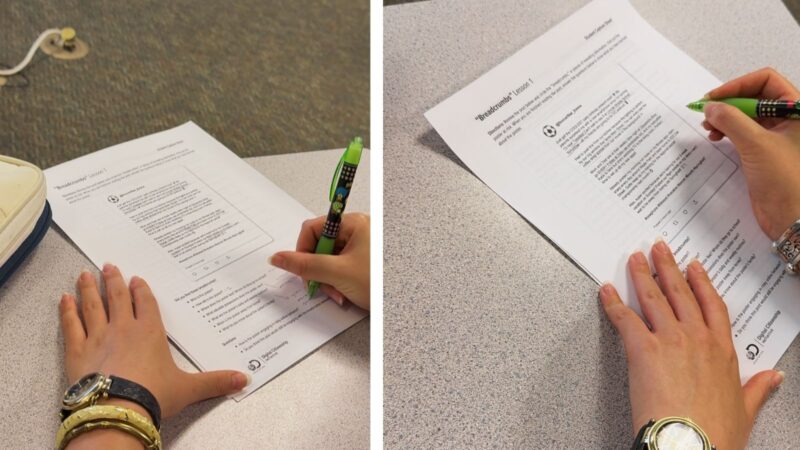When middle school teacher Kim Lepre was invited to review this Digital Citizenship Initiative, she expected the usual reminders about online safety. But she was pleasantly surprised to find so much more to help get her students thinking and talking about their digital lives in new ways. Available as part of Verizon’s Digital Wellness resources through a partnership with Discovery Education, the initiative offers flexible resources that help students explore what it really means to be responsible online.
In this Teacher Pick, Kim shares how the program sparked meaningful conversations in her classroom and gave students a chance to practice smart decision-making in the digital world.
What were your initial thoughts about the Digital Citizenship Initiative?
At first, I expected a pretty typical digital safety lesson—reminders to “be careful online.” But once my students actually tried the lessons, I realized how interactive and discussion-based they are.
After reviewing the materials, what stood out to you most about the initiative?
What stood out was how naturally my students engaged with it. They weren’t just listening to me, they were analyzing posts, debating risks, and even competing to come up with the safest but still engaging versions of a social post. For me as the teacher, the biggest win was that it didn’t feel like I was pulling teeth to get them to participate.
How did you introduce the topic of digital citizenship to your students?
I introduced it during our advisory block, and it worked perfectly as a mix of short video plus hands-on activity. It hooked the kids right away, and it gave us a common language for talking about online safety. I could also see it working as a quick plug-in lesson during ELA or social studies when we talk about audience and responsibility.

Which parts of the Digital Citizenship Initiative do you think would resonate most with your students? Why?
The post-makeover activity was their favorite. They enjoyed the challenge of taking something risky and reworking it into a safe but still fun post (filled with Gen Alpha slang). It felt relevant to them because they’re already posting on social media daily.
It ties directly into our ongoing conversations about being responsible online. We talk a lot about how words and actions matter in person, and this program helps extend that to students’ digital lives. It reinforces the idea that every post, comment, or share is a choice that reflects who they are, and that responsible online behavior is just as important as responsible behavior in the classroom.

What do you think students could gain from participating in this initiative?
I appreciate that it frames students as problem-solvers. Instead of just obeying rules as instructed, students worked through real scenarios and made safer choices on their own. Also, not all students are allowed on social media, so I liked that this showed them how to responsibly use it.
It makes the concept of a digital footprint tangible. Instead of hearing “be careful,” they see exactly how small choices—like a location tag or photo detail—can have lasting effects.
How could these materials extend to help parents and families at home?
The lessons are simple enough that kids can take them home and explain what they learned. A few students mentioned talking to their parents about cookies or app permissions after class.
What advice would you give to other teachers who are considering using the Digital Citizenship Initiative in their classrooms?
Don’t overthink it. Just try it out with one video or one activity. The materials are flexible enough to fit into any class period. Plus, it’s easy to pick and choose which ones fit into your pacing or the grade you teach.

You could use these lessons at a parent night or during a community tech event. Our school has hosted similar events around online safety and mental health, so this would fit right in.
What do you appreciate most about the initiative’s approach to teaching digital responsibility?
It treats students as capable of making smart choices. The materials are not fear-based or punitive. It demonstrates practical strategies, which makes them take more ownership over their online behavior.
Why do you think programs like this are important in today’s classrooms?
Like it or not, digital spaces are where kids spend so much of their time, even if it’s behind their parents’ backs. Just as we teach them how to work in groups or resolve conflicts face-to-face, we have to equip them with the skills to do the same online.
Watch Kim’s video review of the Digital Citizenship Initiative below.
Access the free lessons, videos, and materials that Kim used in her classroom on the Digital Citizen Initiative’s website.
Learn more about Verizon’s Digital Wellness programs that empower educators and families build healthier relationships with technology on the Verizon website.
View the original article and our Inspiration here
